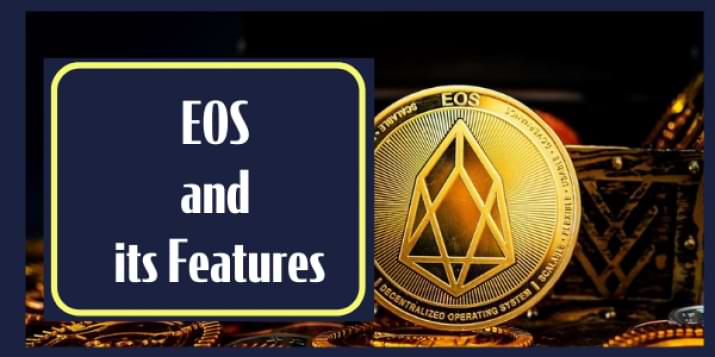
EOS Cryptocurrency Definition and its Features - Explained
EOS is a native crypto currency that powers the blockchain protocol EOS.IO. EOS.IO was developed by block.one in 2017 and released as an open-source software on June 1, 2018. The CEO of block.one, Brendan Blumer, announced that block.one would support the EOS.IO blockchain and raised more than 4 billion USD to support it during the ICO (Initial Coin Offering). It uses a decentralised blockchain and supports decentralized applications (DApps) on its platform and its EOS tokens can be used as "stake" for funding these applications in the EOS ecosystem. EOS also supports a web-toolkit used for interface development.
The EOS protocol emulates many features of a real computer, including hardware such as CPU for processing, local/RAM memory and hard-disk storage. The computing resources are circulated evenly amongst EOS cryptocurrency holders
Defining Features:
Delegated Proof-of-Stake
EOS utilises Delegated Proof-of-Stake. It is different to the regular PoS because it allows anyone who holds tokens on a blockchain adopting the EOS.IO software to choose block producers through a continuous approval voting system. Anyone participating in the block production will be given an opportunity to create blocks if they can sway token holders to vote for them.
It also requires every transaction to include part of the hash of a recent block header. This hash prevents a replay of a transaction on forks that do not include the referenced block and signals the network that a user and their stake are on a specific fork. Thus, users directly confirm the blockchain. This makes it hard to forge counterfeit chains. It is similar to using a transaction as proof of stake.
It is scalable and fast, cost effective, and eco friendly. It has zero transaction fees, which is instead replaced to fit your business’s needs. EOSIO is built for a variety of use cases spanning industries fit for blockchain technology such as Market place, social media, finance, healthcare. government and supply chain.
- Marketplaces
Aligning stakeholders within marketplaces products for transparent value transfer
- Social Media
Attributing value to content creators and rewarding discovery within networks
- Finance
Streamline cross border transactions and settlement within existing banking systems
- Healthcare
Improving transparent access to health data and interoperability between providers
- Government
Adaptable to flexible governance models to fit within existing processes
- Supply Chain
Powering modern supply chains to be more transparent and traceable
A smart contract platform and decentralized operating system intended for the deployment of industrial-scale DApps through a decentralized autonomous corporation model. The smart contract platform claims to eliminate transaction fees and also conduct millions of transactions per second. EOS (EOS) is software that introduces a blockchain architecture designed to enable vertical and horizontal scaling of decentralized applications. The EOS software provides accounts, authentication, databases, asynchronous communication and the scheduling of applications across multiple CPU cores and/or clusters.
How to Buy and Mine EOS
EOS cannot be mined like PoW cryptocurrencies. This is because it uses a delegated proof-of-stake system. This means that every creation of a block is rewarded by creation of new EOS tokens. Block producers are discouraged from bestowing higher rewards for themselves by the system that prevents total annual token supply from increasing more than 5%. In addition, EOS token holders can also vote out producers if they do not adhere to the rues and ideals of EOS.






Leave a Reply
13 comments
Add comment ×